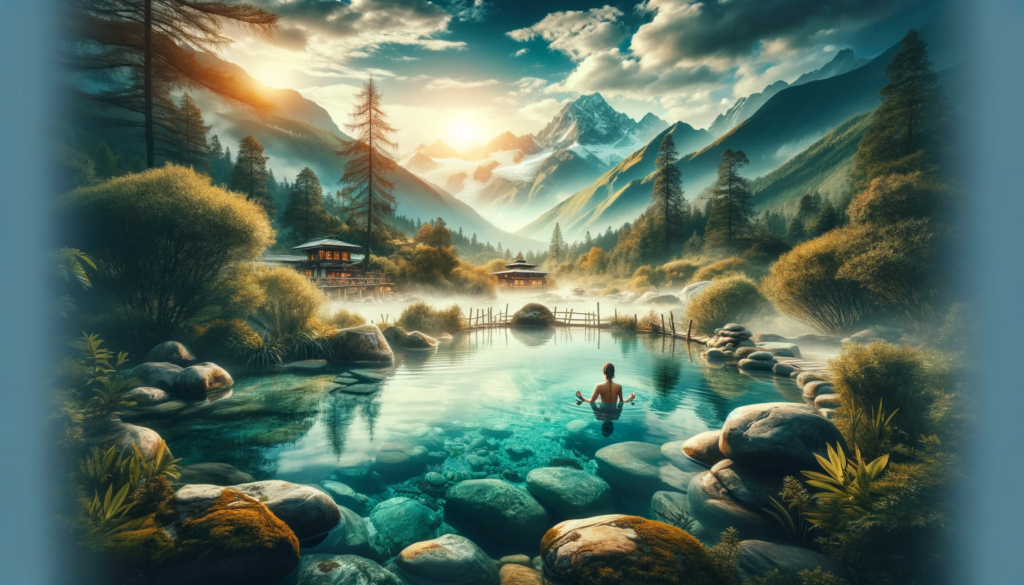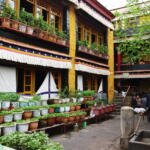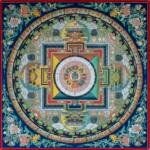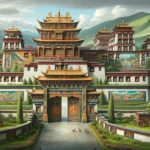Exploring Chubsang Hot Spring: A Healing Retreat in Dechen
Legend of Master Tsongkhapa’s Healing Journey
Perched at 4,054 meters above sea level in the northern region of Quxiong Valley, Doilung Deqen District, Chubsang Hot Spring owes its name to a legend involving Master Tsongkhapa, a revered Tibetan Buddhist master. On his 14th-century journey from Qinghai to Lhasa, Master Tsongkhapa suffered a foot injury and used crutches. At Chubsang, inspired by a crow healing its wounds in the hot spring, he bathed there and miraculously healed within days.
This event led the locals to name the spring “Chubsang,” meaning “high-quality water” in Tibetan. Visitors today can view the marks from Master Tsongkhapa’s crutches and a statue of Tara, believed to have manifested while he recited the Tara Sutra.
Chubsang Hot Spring’s Natural Mountain Pool
Chubsang Hot Spring features a naturally formed open-air pool in the mountains, measuring about 2 meters in length and 1.5 meters in width. The spring accommodates 7 to 8 people and flows with crystal clear water, rich in minerals like sulfur, realgar, and coal, at a warm 49°C.
Therapeutic Benefits and Popularity
For over five centuries since the Ming Dynasty, Chubsang Hot Spring has gained fame for its therapeutic properties. It effectively treats rheumatoid arthritis, skin ailments, and elephantiasis. Additionally, it aids in relieving oedema, nephritis, digestive issues, high blood pressure, and injuries like fractures and burns. Attracting Chinese and international visitors, Chubsang Hot Spring remains a sought-after destination for those seeking health and relaxation amidst nature.
Reaching Chubsang Hot Spring:
Situated about 56 kilometres from Lhasa city, Chubsang Hot Spring is accessible by driving north from the Qinghai-Tibet Line 109 National Highway, passing through the Dechen Township Government area. After arriving in Chubsang Village, the route changes to a dirt road. The journey includes a 15-kilometre stretch and a winding mountain slope section that is about 4 kilometres long with steep slopes. Most small private cars are suitable for this road, but caution is advised when driving uphill and downhill.

Accommodation Options:
Many families visiting Chubsang Hot Spring choose to stay for extended periods, often bringing cooking utensils. The site offers 24 Tibetan-style rooms. Prices may vary, but typically, a bed for an overnight stay costs around 35 Yuan, including hot spring bathing. For those who only wish to bathe in the hot spring, the fee is approximately 15 Yuan per person.
Exploring Beyond the Hot Spring: Discovering the Healing Stone and Birthplace of Yuthok Yonten Gonpo
Discover the “Yuthok Yonten Gonpo Medicine Bag for Generations” Stone
Beyond enjoying the hot spring, visitors have the opportunity to explore the nearby “Yuthok Yonten Gonpo Medicine Bag for Generations” stone. Many believe rubbing their backs and abdomens against this unique rock helps alleviate pain. This belief stems from the stone’s association with Yuthok Yonten Gonpo, a renowned figure in Tibetan medicine, born in the area and known for using the spring’s resources to craft various medicinal materials.
Stay Updated for a Hassle-Free Experience
Given that prices and conditions at the site may vary, visitors should always consult local authorities or accommodations for the latest information before planning their visit. This ensures a well-informed and enjoyable experience at the hot spring and its surrounding historical and medicinal sites.





















